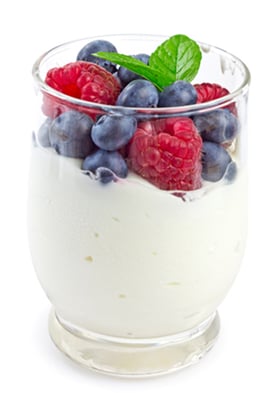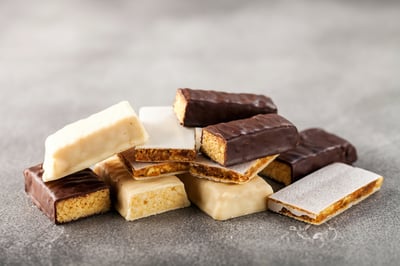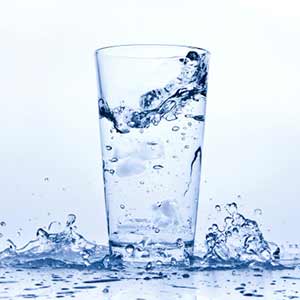 NIFS would like to highlight Brian Kumle, one of the recent graduates from its 14-week Ramp Up to Weight Loss Program. This program provides individuals looking to lose weight with the extra tools that they need to take off pounds and keep them off—without compromising their health—by focusing on healthy eating, exercise, and accountability. The program includes one-on-one training sessions, coaching sessions, fitness evaluations, appointments with our registered dietitian, and guidance along the way. Read about what the program has done for Brian.
NIFS would like to highlight Brian Kumle, one of the recent graduates from its 14-week Ramp Up to Weight Loss Program. This program provides individuals looking to lose weight with the extra tools that they need to take off pounds and keep them off—without compromising their health—by focusing on healthy eating, exercise, and accountability. The program includes one-on-one training sessions, coaching sessions, fitness evaluations, appointments with our registered dietitian, and guidance along the way. Read about what the program has done for Brian.
SHARE YOUR “STORY” OR A BIT ABOUT YOURSELF IN A FEW SENTENCES:
I’m a designer here in Indianapolis, originally from Leo, Indiana. I graduated from Herron School of Art and Design last year.
WHY DID YOU JOIN THIS PROGRAM?
I joined this program because, at the time, I was the heaviest and most out of shape I’ve ever been in my life. I was an athlete in high school and regret each day that I haven’t maintained a body even close to what it was. So I needed a change and to go outside my comfort zone.
SOMETHING YOU HAVE ENJOYED:
I really enjoyed the variety of the workouts and having a little fun doing them. I don’t respond well to being just ordered around, and Emily was very helpful in not only teaching me technique and purpose, but also maintaining a chill AND hardworking atmosphere.
SOMETHING YOU HAVE LEARNED OR SOMETHING THAT SURPRISED YOU:
Something that definitely surprised me was how much body fat I lost in just 14 weeks*. It wasn’t astronomical, but it was more than I expected.
FAVORITE EXERCISE FROM ONE OF THE WORKOUTS?
Love/Hate: The sled push or the medicine ball ab circuit was a love/hate relationship.
WHAT ACCOMPLISHMENTS HAVE YOU ACHIEVED DURING YOUR TRAINING PROGRAM (OR DO YOU HOPE TO ACHIEVE)?
I got a great start in losing the body fat and gaining a bit of muscle*. I also learned a ton of exercises that will definitely help me going forward and make working out exciting.
WHAT STRUGGLES HAVE YOU ENCOUNTERED? TIPS YOU HAVE LEARNED ALONG THE WAY?
Reverting back to old habits on the weekends and struggling to get the ball rolling again after that as well as having to work AFTER work. I learned that even a highly intense 30-minute workout is better than nothing, and that even if I can’t work out on a day, I can still control what I’m putting into my body.
HOW DO YOU STAY MOTIVATED?
Just thinking of what I will look/feel like in a month, 3 months, 6 months, a year if I keep working harder and harder. And, of course, looking in the mirror.
ANY OTHER THOUGHTS YOU WISH TO SHARE:
Just a lot of thanks for all the guidance and resources the program and Emily provided me. THANKS!
This blog was written by Emily O’Rourke BS, HFS, Weight Loss Program Coordinator at NIFS. To find out more about the NIFS bloggers, click here


 Probiotics are live bacteria and yeasts that are good for your health, specifically your digestive system. These “good” types of bacteria help to keep your gut working properly.
Probiotics are live bacteria and yeasts that are good for your health, specifically your digestive system. These “good” types of bacteria help to keep your gut working properly. 
 Warm weather and sunny days definitely have me craving a fruit and veggie-packed smoothie first thing in the morning, no doubt about it. Full of fiber, plant-based protein, vitamins, and minerals galore, it’s pretty clear that drinking a smoothie is a guaranteed way to get in a nutrient-packed breakfast to start your day with healthy eating.
Warm weather and sunny days definitely have me craving a fruit and veggie-packed smoothie first thing in the morning, no doubt about it. Full of fiber, plant-based protein, vitamins, and minerals galore, it’s pretty clear that drinking a smoothie is a guaranteed way to get in a nutrient-packed breakfast to start your day with healthy eating.  Picture this for a minute, if you are so kind to indulge me. It is 7am on any given Monday, and you hop out of bed, just realizing that you are late for your morning rituals (probably because you hit the snooze seven times). You rush to get ready for work, dress quickly, and run out the door just as fast (
Picture this for a minute, if you are so kind to indulge me. It is 7am on any given Monday, and you hop out of bed, just realizing that you are late for your morning rituals (probably because you hit the snooze seven times). You rush to get ready for work, dress quickly, and run out the door just as fast ( There are so many nutrition bars out there that I am sure it can be a challenge to pick one that is the best. So how do you know if the bar you are choosing is the healthiest option for you? With anything, when it comes to your food and nutrition, the key is moderation and balance. You should be choosing a bar that you like the taste of and that works for your schedule and habits.
There are so many nutrition bars out there that I am sure it can be a challenge to pick one that is the best. So how do you know if the bar you are choosing is the healthiest option for you? With anything, when it comes to your food and nutrition, the key is moderation and balance. You should be choosing a bar that you like the taste of and that works for your schedule and habits. 
 Water is everywhere but where you need it: inside your body. Do you ever check to see how much water you actually consume a day?
Water is everywhere but where you need it: inside your body. Do you ever check to see how much water you actually consume a day? 
 Vegans
Vegans For people new to fitness, creating a healthy body image can be as challenging as creating a workout or diet plan. What do we consider healthy and why?
For people new to fitness, creating a healthy body image can be as challenging as creating a workout or diet plan. What do we consider healthy and why?
 If you are like most people, as soon as the fall season arrives, it’s time to get your annual
If you are like most people, as soon as the fall season arrives, it’s time to get your annual  One of my favorite holiday traditions is making fabulous treats and snacks for friends, family, co-workers, and neighbors. Entire days are spent baking in the kitchen, and the best part (after sampling the treats first hand) is hearing how great everything tastes. Little do they know that with just a few simple tweaks, those cookies and candies can be dramatically lower in fat and calories. Here are a few easy ways to tweak your recipes for healthy eating.
One of my favorite holiday traditions is making fabulous treats and snacks for friends, family, co-workers, and neighbors. Entire days are spent baking in the kitchen, and the best part (after sampling the treats first hand) is hearing how great everything tastes. Little do they know that with just a few simple tweaks, those cookies and candies can be dramatically lower in fat and calories. Here are a few easy ways to tweak your recipes for healthy eating.